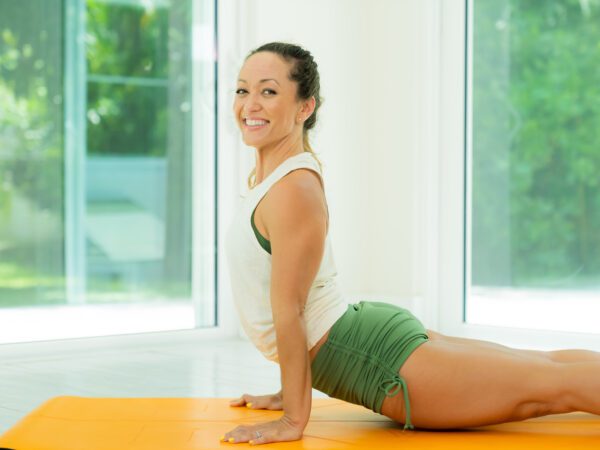Creating a dedicated yoga space is essential for both teachers and students. A well-designed yoga space fosters a sense of tranquility, focus, and connection, enhancing the overall wellness and yoga experience. For teachers, it provides a professional environment to conduct classes, while for students, it offers a sanctuary to practice and grow.
A dedicated yoga space has numerous benefits. For teachers, it ensures a consistent and controlled environment, allowing for better class management and the ability to create a specific ambiance. For students, a dedicated space helps them build a routine, reduce distractions, and deepen their practice.
In this guide, we will cover the following main points:
Choosing the Right Location: Tips on selecting the ideal spot for your yoga space.
Design and Layout: How to arrange your space for maximum comfort and functionality.
Essential Equipment and Props: Must-have items to enhance the yoga experience.
Creating the Right Atmosphere: Ideas for lighting, sound, and scent to create a calming environment.
Maintaining Your Yoga Space: Tips for keeping your space clean and inviting.
Understanding the Importance of a Yoga Space
What is a Yoga Space?
A yoga space is a designated area specifically set aside for practicing yoga. This space can be a room, a corner of a room, or even an outdoor area that is free from distractions and designed to promote relaxation, focus, and mindfulness. The key is that it is a place where teachers and students can fully immerse themselves in their practice. In this article we’ll be looking at what you need to make a yoga studio space conducive to teaching students.
Psychological and Physical Benefits of a Dedicated Yoga Space
Having a dedicated yoga space offers numerous psychological and physical benefits, including improved concentration during each asana:
Psychological Benefits:
Reduced Stress: A serene and clutter-free environment helps in reducing stress and anxiety, allowing for a more peaceful state of mind.
Increased Focus: A dedicated space minimizes distractions, helping practitioners to concentrate better and achieve a deeper level of meditation.
Consistency and Routine: Having a specific place for yoga encourages regular practice, which is essential for mental and emotional well-being.
Physical Benefits:
Improved Posture and Alignment: A well-designed space with the right equipment ensures that practitioners can perform poses correctly, reducing the risk of injury.
Enhanced Flexibility and Strength: Regular practice in a dedicated space helps in building flexibility and strength over time.
Better Breathing: A calm and clean environment promotes better breathing techniques, which are crucial for effective yoga practice.
How a Well-Designed Space Can Enhance the Yoga Experience
A well-designed yoga space can significantly enhance the overall yoga experience in several ways:
Ambiance and Atmosphere: The right lighting, sound, and scent can create a calming and inviting atmosphere that helps practitioners to relax and focus.
Comfort and Functionality: Proper layout and the inclusion of essential equipment and props ensure that the space is comfortable and functional, catering to the needs of both beginners and advanced practitioners.
Personalization: A dedicated space allows for personalization, making it a reflection of one’s practice and preferences. This personal touch can make the space more inviting and motivating.
Community Building: For teachers, a well-designed space can foster a sense of community among students, making them feel more connected and engaged in their practice.
By investing time and effort into creating a dedicated yoga space, both teachers and students can enjoy a more enriching and fulfilling yoga experience.
Choosing the Right Location
Factors to Consider When Selecting a Location
Choosing the right location for your yoga space, whether a home studio or a commercial venue, is crucial for creating an environment that supports and enhances your practice. Here are some key factors to consider:
Size and Capacity
Adequate Space: Ensure the space is large enough to accommodate the number of students you plan to teach. Each student should have enough room to move freely without feeling cramped.
Future Growth: Consider the potential for future growth. If you plan to expand your classes, choose a space that can accommodate more students or can be easily adapted.
Accessibility
Convenient Location: The space should be easily accessible for both you and your students. Consider proximity to public transportation, parking availability, and ease of entry.
Inclusivity: Ensure the space is accessible to individuals with disabilities. This includes having ramps, elevators, and accessible restrooms if needed.
Natural Light and Ventilation
Natural Light: A space with ample natural light can create a more uplifting and energizing environment. Large windows or skylights can help bring in natural light.
Ventilation: Good ventilation is essential for maintaining a fresh and comfortable atmosphere. Ensure the space has windows that can be opened or a reliable HVAC system to circulate air.
Indoor vs. Outdoor Spaces
Indoor Spaces: Indoor spaces offer more control over the environment, including temperature, lighting, and noise levels. They are ideal for year-round practice, regardless of weather conditions.
Outdoor Spaces: Outdoor spaces can provide a unique and refreshing experience, connecting practitioners with nature. However, they may be subject to weather conditions and may require additional considerations for privacy and noise control.
Importance of a Quiet and Serene Environment
Noise Levels: Choose a location that is free from excessive noise. A quiet environment is essential for maintaining focus and relaxation during practice.
Serenity: The space should evoke a sense of calm and tranquility. Consider the surrounding environment and whether it contributes to a peaceful atmosphere. Avoid locations near busy streets, loud businesses, or other sources of disruption.
By carefully considering these factors, you can select a location that enhances the yoga experience for both you and your students, creating a space that is inviting, functional, and conducive to a fulfilling practice.
Essential Elements of a Yoga Space
Flooring Options
Choosing the right flooring for your yoga space is essential for comfort, safety, and functionality. Here are some popular options:
Mats: High-quality yoga mats provide cushioning and grip, essential for performing poses safely. They can be used on various surfaces and are easy to clean and store.
Hardwood: Hardwood floors are a popular choice for yoga studios due to their durability and aesthetic appeal. They provide a stable surface for balance and are easy to clean. However, they may require additional cushioning, such as yoga mats or rugs, for comfort.
Carpet: Carpeted floors offer a soft and comfortable surface, which can be beneficial for certain poses. However, they may lack the stability and grip needed for more dynamic practices. Additionally, carpets can be harder to clean and may harbor allergens.
Lighting
Proper lighting can significantly impact the ambiance and functionality of your yoga space. Consider the following options:
Natural Light: Natural light creates a warm and inviting atmosphere. Large windows or skylights can help bring in natural light, enhancing mood and energy levels. However, be mindful of glare and privacy concerns.
Artificial Light: When natural light is insufficient, use artificial lighting to create the desired ambiance. Dimmable lights allow you to adjust the brightness according to the time of day and type of practice.
Candles: Candles can add a soothing and meditative element to your yoga space. Use them to create a calming atmosphere, especially during evening classes or relaxation sessions. Ensure they are placed safely to avoid any fire hazards.
Temperature Control
Maintaining a comfortable temperature is crucial for a pleasant yoga experience. Here are some tips for temperature control:
Comfortable Temperature: The ideal temperature for a yoga space is typically between 70-75°F (21-24°C). This range ensures that students are neither too hot nor too cold, allowing for optimal flexibility and comfort.
Fans: Ceiling or portable fans can help circulate air and maintain a comfortable temperature, especially in warmer climates. They can also provide a gentle breeze, enhancing the overall experience.
Heaters: In colder climates, heaters can help maintain a warm and cozy environment. Consider using space heaters or underfloor heating systems to provide consistent warmth.
Air Conditioning: In hot and humid conditions, air conditioning can help keep the space cool and comfortable. Ensure the system is quiet and does not create a draft that could disrupt the practice.
By carefully selecting flooring, lighting, and temperature control options, you can create a yoga space that is comfortable, inviting, and conducive to a fulfilling practice.
Creating a Calming Atmosphere
Color Schemes and Decor
The color scheme and decor of your yoga space play a significant role in creating a calming and inviting atmosphere. Here are some tips to consider:
Choosing Calming Colors
Neutral Tones: Soft, neutral colors like beige, white, and light gray can create a serene and peaceful environment. These colors are versatile and can easily be complemented with other decor elements.
Cool Colors: Shades of blue and green are known for their calming effects. These colors can help reduce stress and promote relaxation.
Earthy Tones: Earthy colors like soft browns, muted greens, and warm terracottas can create a grounded and natural feel, enhancing the connection to nature.
Minimalistic vs. Decorative Approaches
Minimalistic: A minimalistic approach focuses on simplicity and functionality. This style uses fewer decor elements, creating a clean and uncluttered space that promotes focus and mindfulness.
Decorative: A more decorative approach can add personality and warmth to the space. Incorporate meaningful art, inspirational quotes, or cultural elements that resonate with the practice of yoga. However, be mindful not to overcrowd the space, as too many decorations can be distracting.
Incorporating Nature
Bringing elements of nature into your yoga space can enhance the sense of tranquility and connection to the natural world.
Plants and Natural Elements
Plants: Indoor plants can improve air quality and add a touch of greenery, creating a more vibrant and refreshing environment. Choose low-maintenance plants like succulents, snake plants, or peace lilies.
Natural Materials: Use natural materials like wood, bamboo, and stone in your decor. These elements can create a more organic and grounding atmosphere.
Water Features and Natural Sounds
Water Features: Small water features like tabletop fountains can add a soothing auditory element to your space. The sound of flowing water can enhance relaxation and create a meditative ambiance.
Natural Sounds: Incorporate natural sounds like birdsong, ocean waves, or forest ambiance through a sound system. These sounds can help mask external noise and create a more immersive experience.
Use of Scents
Scents can significantly influence the mood and atmosphere of your yoga space. Here are some ways to incorporate them:
Essential Oils and Incense
Essential Oils: Use a diffuser to disperse essential oils throughout the space. Essential oils like lavender, eucalyptus, and sandalwood are popular choices for promoting relaxation and focus.
Incense: Burning incense can add a spiritual and aromatic element to your practice. Choose high-quality incense sticks or cones to avoid harsh chemicals and strong smoke.
Choosing the Right Scents for Relaxation and Focus
Lavender: Known for its calming properties, lavender can help reduce stress and promote relaxation.
Eucalyptus: Eucalyptus has a refreshing and invigorating scent that can enhance focus and clarity.
Sandalwood: Sandalwood has a warm and grounding aroma, making it ideal for meditation and spiritual practices.
Citrus: Scents like lemon and orange can uplift the mood and energize the space, making them suitable for morning practices.
By carefully selecting color schemes, decor, natural elements, and scents, you can create a yoga space that is both aesthetically pleasing and conducive to a peaceful and focused practice.
Equipment and Props
Essential Yoga Props
Having the right yoga props can enhance the practice for both teachers and students by providing support, improving alignment, and increasing comfort. Here are some essential yoga props to consider:
Mats: High-quality yoga mats are a must-have for any yoga space. They provide cushioning and grip, essential for performing poses safely and comfortably.
Blocks: Yoga blocks help with alignment and provide support in various poses. They are especially useful for beginners or those with limited flexibility.
Straps: Yoga straps assist in deepening stretches and improving flexibility. They can also help maintain proper alignment in challenging poses.
Bolsters: Bolsters offer support and comfort in restorative poses and meditation. They can be used to enhance relaxation and provide additional cushioning.
Storage Solutions
Keeping your yoga space organized and clutter-free is essential for maintaining a serene and functional environment. Here are some storage solutions to consider:
Shelving Units: Install shelves to store props like blocks, straps, and bolsters neatly. Open shelving allows for easy access and keeps everything visible.
Storage Bins: Use storage bins or baskets to keep smaller items organized. Label the bins for easy identification and access.
Mat Racks: Wall-mounted or freestanding mat racks can help keep yoga mats organized and off the floor, saving space and maintaining cleanliness.
Cabinets: Closed cabinets can be used to store items that are not frequently used, keeping the space tidy and uncluttered.
Optional Equipment
While not essential, optional equipment can enhance the yoga experience and provide additional functionality to your space:
Sound Systems: A good sound system can play calming music or natural sounds, enhancing the ambiance and helping students focus. Consider using Bluetooth speakers for easy connectivity and control.
Mirrors: Mirrors can help students check their alignment and form during practice. They can also make the space feel larger and more open. Ensure mirrors are securely mounted and placed strategically.
Yoga Walls: Yoga walls equipped with straps and anchors can provide support for various poses and help deepen stretches. They are particularly useful for advanced practices and therapeutic yoga.
By incorporating essential yoga props, effective storage solutions, and optional equipment, you can create a well-equipped and organized yoga space that caters to the needs of both teachers and students.
Personalizing the Space
Adding Personal Touches
Personalizing your yoga space can make it more inviting and reflective of your unique style and philosophy. Here are some ideas for adding personal touches:
Inspirational Quotes and Artwork
Inspirational Quotes: Displaying inspirational quotes can motivate and uplift students. Choose quotes that resonate with the principles of yoga and mindfulness. You can frame them or create a dedicated quote wall.
Artwork: Incorporate artwork that reflects the themes of peace, balance, and nature. This could include paintings, prints, or sculptures. Art can enhance the aesthetic appeal of the space and create a more immersive experience.
Personal Mementos and Teacher’s Touch
Personal Mementos: Adding personal mementos, such as travel souvenirs, meaningful objects, or gifts from students, can make the space feel more intimate and connected. These items can serve as conversation starters and create a sense of community.
Teacher’s Touch: Infuse your personality into the space with elements that reflect your teaching style and philosophy. This could include a signature scent, a favorite piece of music, or a unique decor item that represents your journey as a yoga teacher.
Creating a Welcoming Environment
A welcoming environment is essential for making students feel comfortable and at ease. Here are some ways to create a hospitable atmosphere:
Comfortable Seating for Students
Seating Area: Provide a comfortable seating area where students can relax before and after class. This could include cushioned chairs, benches, or floor cushions.
Reading Materials: Offer a selection of yoga-related books, magazines, or pamphlets for students to browse while they wait. This can also serve as an educational resource.
Refreshments and Amenities
Refreshments: Providing refreshments like water, herbal tea, or light snacks can make students feel more at home. Consider setting up a small refreshment station with a water dispenser, tea kettle, and healthy snacks.
Amenities: Offer amenities such as clean towels, hand sanitizer, and tissues. Ensure that the restroom is easily accessible and well-stocked with essentials.
Welcoming Decor: Use welcoming decor elements like soft lighting, cozy rugs, and warm colors to create a comfortable and inviting atmosphere. Fresh flowers or a small indoor fountain can add a touch of elegance and tranquility.
By adding personal touches and creating a welcoming environment, you can make your yoga space a place where students feel valued, comfortable, and inspired to deepen their practice.
Maintaining the Yoga Space
Regular Cleaning and Upkeep
Maintaining a clean and hygienic yoga space is crucial for the health and well-being of both teachers and students. Here are some key points to consider:
Importance of Hygiene and Cleanliness
Health and Safety: Regular cleaning helps prevent the spread of germs and bacteria, ensuring a safe environment for everyone. This is especially important in a shared space where multiple people come into contact with surfaces and equipment.
Enhanced Experience: A clean and well-maintained space creates a more pleasant and inviting atmosphere, allowing students to focus on their practice without distractions.
Professionalism: Keeping your yoga space clean reflects your professionalism and commitment to providing a high-quality experience for your students.
Cleaning Tips
Daily Cleaning: Wipe down mats, blocks, and other props with disinfectant wipes or a natural cleaning solution after each class. Sweep or vacuum the floor to remove dust and debris.
Weekly Deep Cleaning: Perform a more thorough cleaning at least once a week. This includes mopping the floors, dusting surfaces, and washing any fabric items like bolsters or cushion covers.
Air Quality: Ensure good air quality by regularly ventilating the space and using air purifiers if necessary. This helps remove allergens and keeps the air fresh.
Periodic Updates and Refreshes
Keeping your yoga space fresh and inviting involves periodic updates and refreshes. This not only maintains the aesthetic appeal but also keeps the environment dynamic and engaging.
Importance of Updates
Prevent Wear and Tear: Regular updates help prevent wear and tear from becoming noticeable. Replacing worn-out props and equipment ensures that everything remains in good condition.
Maintain Interest: Periodic changes in decor or layout can keep the space interesting and engaging for returning students. It shows that you care about the environment and are committed to continuous improvement.
Refresh Ideas
Seasonal Decor: Update your decor to reflect the changing seasons. This could include different color schemes, seasonal plants, or themed artwork.
New Props and Equipment: Introduce new props or equipment periodically to keep the practice varied and exciting. This could include new types of blocks, straps, or even advanced equipment like yoga walls.
Rearrange Layout: Occasionally rearrange the layout of the space to create a fresh perspective. This can also help optimize the flow and functionality of the room.
Fresh Scents: Change the scents used in the space to reflect different seasons or moods. This can be done through essential oils, incense, or scented candles.
By prioritizing regular cleaning and periodic updates, you can ensure that your yoga space remains a clean, inviting, and dynamic environment that supports the well-being and growth of your students.
Creating a dedicated yoga space is a vital step for both teachers and students to enhance their practice and overall experience. By carefully considering factors such as location, flooring, lighting, temperature control, and decor, you can design a space that is both functional and inviting. Incorporating essential yoga props, effective storage solutions, and optional equipment further enriches the environment, making it conducive to a fulfilling practice.
Adding personal touches and creating a welcoming atmosphere ensures that students feel valued and comfortable, fostering a sense of community and connection. Regular cleaning and periodic updates keep the space fresh, hygienic, and engaging, reflecting your commitment to providing a high-quality experience.
In conclusion, a well-designed yoga space is more than just a physical location; it is a sanctuary where students can find peace, focus, and growth. By investing time and effort into creating and maintaining this space, you not only enhance your teaching practice but also contribute to the well-being and development of your students. Embrace the journey of creating your ideal yoga space, and watch as it transforms the practice for everyone involved.
Do you want resources to help you become a better yoga teacher? Omstars offers specialty courses for teachers.
Photo by Frames For Your Heart on Unsplash









